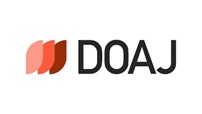Abstract
In a market where new and used cars are competing with each other, we would run the risk of obtaining biased estimates of cross elasticity between them if we focus on only new cars or on only used cars. Unfortunately, most of previous studies on the automobile industry have focused on only new car models without taking into account the effect of used cars ``pricing policy on new cars`` market shares and vice versa, resulting in inadequate prediction of reactive pricing in response to competitors`` rebate or price discount. However, there are some exceptions. Purohit (1992) and Sullivan (1990) looked into both new and used car markets at the same time to examine the effect of new car model launching on the used car prices. But their studies have some limitations in that they employed the average used car prices reported in NADA Used Car Guide instead of actual transaction prices. Some of the conflicting results may be due to this problem in the data. Park (1998) recognized this problem and used the actual prices in his study. His work is notable in that he investigated the qualitative effect of new car model launching on the pricing policy of the used car in terms of reinforcement of brand equity. The current work also used the actual price like Park (1998) but the quantitative aspect of competitive price promotion between new and used cars of the same model was explored. In this study, I develop a model that assumes that the cross elasticity between new and used cars of the same model is higher than those amongst new cars and used cars of the different model. Specifically, I apply the nested logit model that assumes the car model choice at the first stage and the choice between new and used cars at the second stage. This proposed model is compared to the 11A (Independence of Irrelevant Alternatives) model that assumes that there is no decision hierarchy but that new and used cars of the different model are all substitutable at the first stage. The data for this study are drawn from Power Information Network (PIN), an affiliate of J D. Power and Associates. PIN collects sales transaction data from a sample of dealerships in the major metropolitan areas in the U.S. These are retail transactions i.e., sales or leases to final consumers, excluding fleet sales and including both new car and used car sales. Each observation in the PIN database contains the transaction date, the manufacturer, model year, make, model, trim and other car information, the transaction price, consumer rebates, the interest rate, term, amount financed (when the vehicle is financed or leased), etc. I used data for the compact cars sold during the period January 2009 - June 2009. The new and used cars of the top nine selling models are included in the study: Mazda 3, Honda Civic, Chevrolet Cobalt, Toyota Corolla, Hyundai Elantra, Ford Focus, Volkswagen Jetta, Nissan Sentra, and Kia Spectra. These models in the study accounted for 87% of category unit sales, Empirical application of the nested logit model showed that the proposed model outperformed the hA (Independence of Irrelevant Alternatives) model in both calibration and holdout samples, The other comparison model that assumes choice between new and used cars at the first stage and car model choice at the second stage turned out to be mis-specfied since the dissimilarity parameter (i.e.. inclusive or categroy value parameter) was estimated to be greater than 1. Post hoc analysis based on estimated parameters was conducted employing the modified Lanczo`s iterative method. This method is intuitively appealing. For example, suppose a new car offers a certain amount of rebate and gains market share at first. In response to this rebate, a used car of the same model keeps decreasing price until it regains the lost market share to maintain the status quo, The new car settle down to a lowered market share due to the used car`s reaction, The method enables us to find the amount of price discount to main the status quo and equilibrium market shares of the new and used cars, In the first simulation, I used Jetta as a focal brand to see how its new and used cars set prices, rebates or APR interactively assuming that reactive cars respond to price promotion to maintain the status quo. The simulation results showed that the BA model underestimates cross elasticities, resulting in suggesting less aggressive used car price discount in response to new cars` rebate than the proposed nested logit model. In the second simulation, I used Elantra to reconfirm the result for Jetta and came to the same conclusion. In the third simulation, I had Corolla offer $1,000 rebate to see what could be the best response for Eiantra`s new and used cars. Interestingly, Elantra`s used car could maintain the status quo by offering lower price discount ($160) than the new car ($205). In the future research, we might want to explore the plausibility of the alternative nested logit model. For example, the NUB model that assumes choice between new and used cars at the first stage and brand choice at the second stage could be a possibility even though it was rejected in the current study because of misspecification (A dissimilarity parameter turned out to be higher than 1). The NUB model may have been rejected due to true misspecification or data structure transmitted from a typical car dealership. In a typical car dealership, both new and used cars of the same model are displayed. Because of this fact the BNU model that assumes brand choice at the first stage and choice between new and used cars at the second stage may have been favored in the current study since customers first choose a dealership (brand) then choose between new and used cars given this market environment. However, suppose there are dealerships that carry both new and used cars of various models, then the NUB model might fit the data as well as the BNU model. Which model is a better description of the data is an empirical question. In addition, it would be interesting to test a probabilistic mixture model of the BNU and NUB on a new data set.
Recommended Citation
Chang, Kwang Pil
(2012)
"신차와 중고차간 프로모션의 상호작용에 대한 연구,"
Asia Marketing Journal: Vol. 14
:
Iss.
1
, Article 5.
Available at: https://doi.org/10.53728/2765-6500.1473
Creative Commons License

This work is licensed under a Creative Commons Attribution 4.0 License.





